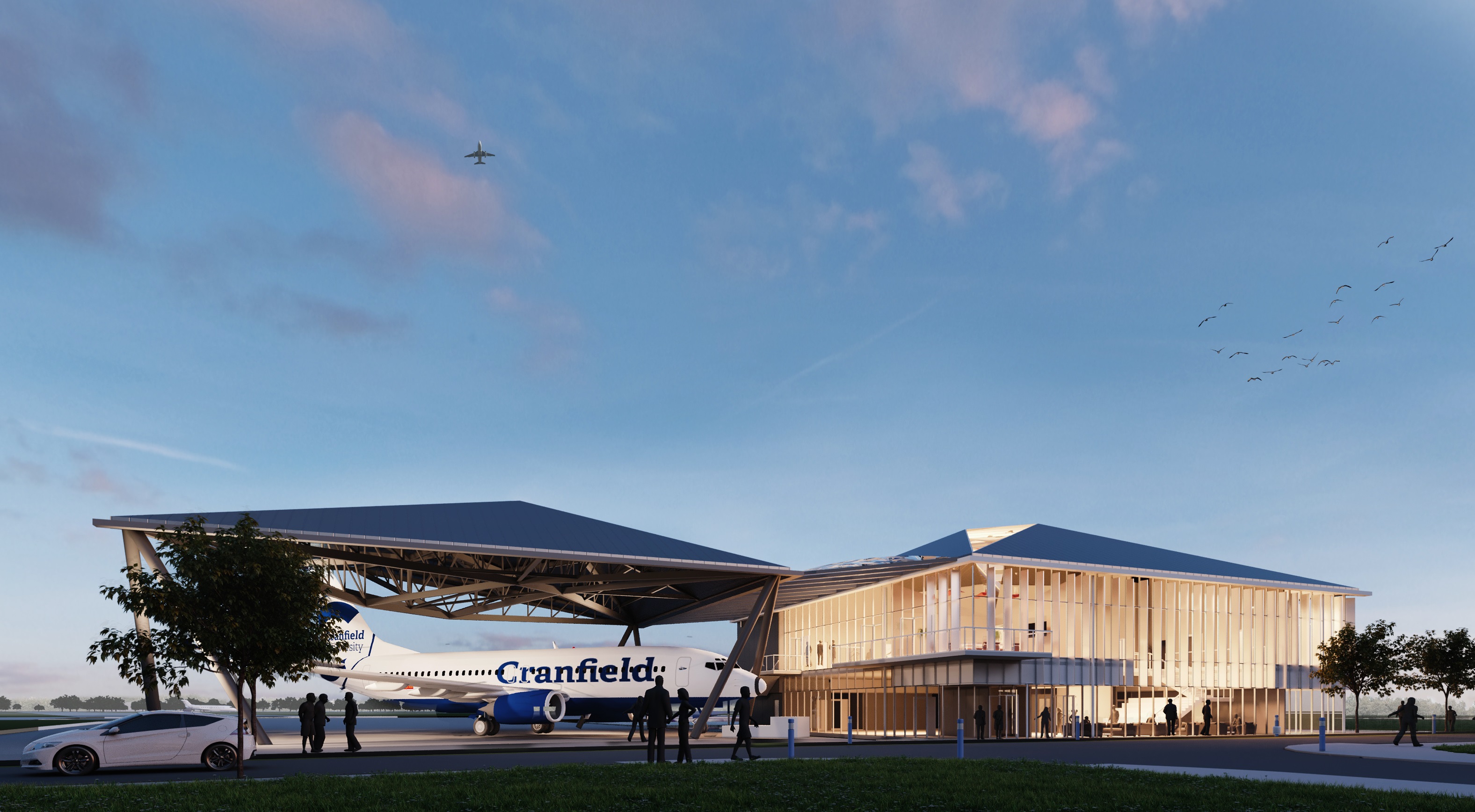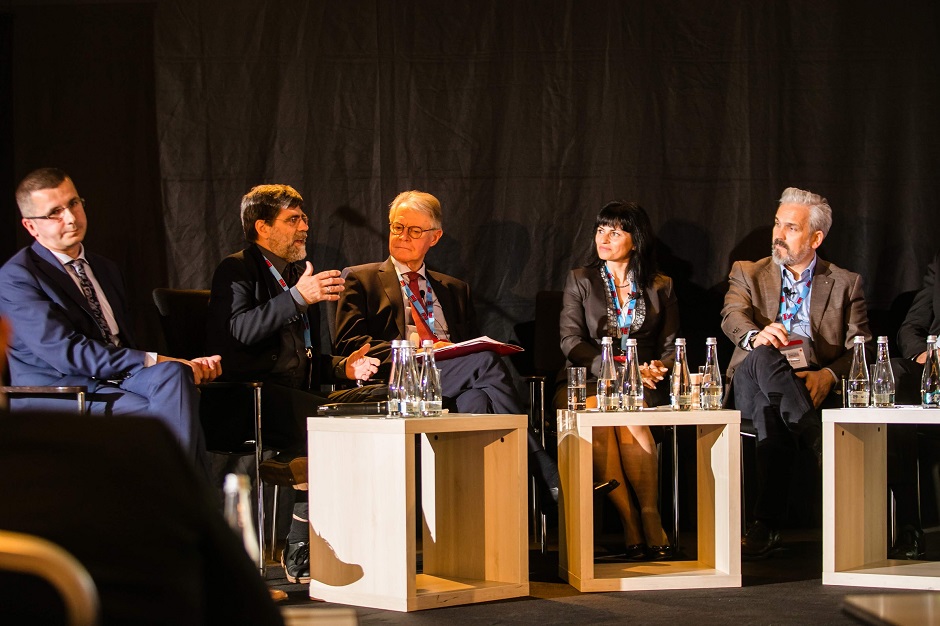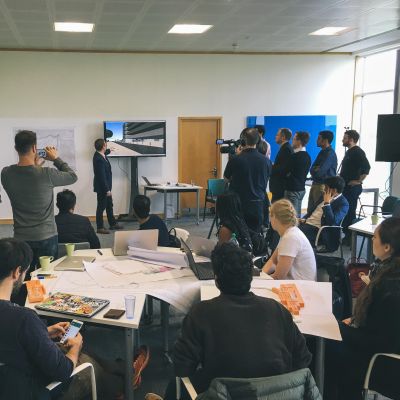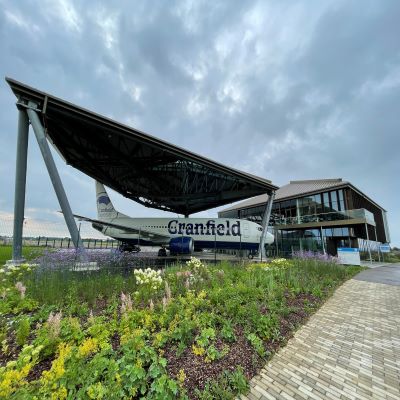- DatesJanuary 2015 – February 2020 Implementation of the Research Association March 2023 – August 2023 Research Phase 1: Passenger Processing along the Journey September 2023 – December 2026 Research Phase 2: From Airport and City, KPI’s to measure successful integration
- SponsorHEIF, Aviation & Airports International, further funders to be confirmed
- Funded£65,500
- PartnersAirport Excellence, AiQ Consulting, AirPortr, LEITRON, planeground, Reitsema & Partners, Perkins+Will
Our research programme is forging the airport of tomorrow. In an unprecedented design-led study at our laboratories at Cranfield Airport, we will reveal how airports need to address their future.
Systematically we will deconstruct the current airport operation and movement patterns of passengers and goods to and from airports, leading to a new airport model - replacing peak-hour dominated planning by transforming airports into sustainable structures within a circular economy.
- While we spend more and more time travelling, living in between the journey from and to airports is becoming increasingly diverse; new forms of urban occupation occur, such as co-working.
- By liberating the passenger from their baggage, the use of public transport will be encouraged. Increasing commercial pressure and environmental challenges are demanding better and more efficient use of resources.
- Airports can take a far more proactive position with the value chain of urban transport. Autonomous vehicles will eradicate traditional car park revenues, logistic networks and replace the traditional high street. Ultimately airports will submerge within the urban conglomerate.
- Consequently, new forms of security control have to address emerging challenges from increasing concentrations of passengers and local citizens on landside, as recent attacks on airports in Brussels, Istanbul and Moscow have indicated. Our vision is to enable airports to participate and potentially lead societal changes.
This will not only include new conceptual approaches towards technology within current transport strategies, but also faster and more direct access from the city to the aircraft.

Areas of focus
Our work will focus on three areas:
Passenger process
- Simplify the passenger process within the terminal and outside, and investigate better locations for each process.
- Detach bags from passengers – integrate baggage transport into other logistic chains and establish a new passenger end-to-end experience from departure to destination.
- Enhance the passenger experience and re-think the journey of the passenger through sensory experiences.
- Passengers are citizens and citizens are passengers: better utilise facilities and fill the gaps between peaks with non-aviation activities.
- The airport’s role within global retail streams is to be readdressed as a joint experience.
Movement to and from the airport
- Introduce city-thinking in response to increased demand to shared ownership and shared live-work-travel arrangements, create new identities and environments.
- Rethink airport access and conceptualise the operation of driverless cars for people travelling to and working at the airport.
- Inspire people with easy access to and from the airport after work and take advantage of close proximity.
- Compare the entire journey from down-town to boarding to walking distances.
- Explore further opportunities from tracking passengers and baggage – multichannel business between airport and city.
- Consider airports as part of larger ecosystems and connect airports to high speed train lines.
- Identify synergies between airports and the local community and airlines.
- Include the construction process as part of the airport operation.
- Synchronize data from commonly used open data platforms to encourage collaborative growth of airports, cities and regions.
Terminal to aircraft
- Explore new opportunities of faster boarding.
- Prepare airports for new generation aircraft and associated spatial and organisational requirements.
- Consider the impact of electric aircraft and drones, autonomous landside and airside vehicles.
- Robotise the aircraft operation.
News and events
September 2025
The third Airport City Developer Forum at LabCampus at Munich Airport last week was yet another fantastic event: welcoming, open-minded, and challenging the status quo of the Airport City - perhaps we got even a little closer to defining this term, as UrbanTurbine suggests its reading as the mobility platform connecting 'Airport and the City'.
April 2024
Totally exhausted after 3 days airports, cities and all that jazz at Passenger Terminal EXPO in Frankfurt. Thank you, Janine McEvilly for this amazing event and Fraport AG hosting. For all the walking between the exhibition and conference we all deserve an award but what can you do if industry shows such an interest. And I felt academia and industry never coming closer to engage in making travelling much more sustainable!
Thank you also to my panel members Thor Thoeneie, Peter de Leeuw, Alex Kirkwood and Dimitris Argyros and Teet Raudsep from Tallinn Airport (TLL) extending the Airport City Development Forum and Alexandra Covrig from the Airport Regions Council for conducting the day.
September 2023
Transforming airports into sustainable mobility hubs is high on the agenda in our response to climate change. Utilising airport city developments as catalyst, exploring mutual benefits for all stakeholders was in the heart of the First Airport City Developer’s Forum organised by Vienna Airport. In a year’s time the academic partners from the UrbanTurbine at Cranfield University, Fachhochschule Wiener Neustadt and UNSW School of Aviation in close collaboration with the 14 participating airports, 1 airport in the making, 7 consultancy partners and 1 space and urban planning institutes will present the results at the next ACDF. We are looking forward to an exciting year ahead.
Thank you Nick Prowse, Ronny Lilienvald, René Droese, Réka Sebestyén, Nigel L H Tse, Ulla Ruuskanen, Manfred Schrenk, Stefan Burgstaller, René Dichant, Wolfgang Scheibenpflug, Peter de Leeuw, Christian Moser, Juliana Ghasemipour-Yazdi, Helena Pilnáčková , Martina Spáčilová, Zuzana Kmoníčková, Samuel Torfi Petursson, Jonathan de Bruijne, Pieter van der Horst, Leila LOPES, Olaf C. Bünck, Chris LeTourneur, Paweł Paszak, Krunoslaw Sams, YUKI KAWAKITA, Shuhei Kuboki, Matthias Zibuschka, Birgit Rahn-Werner, Christian Baumann and Henrik Rothe.
June 2020
We are proud to announce that Salzburg, Austria’s largest regional airport became the first airport sponsor of the Urban Turbine research project. Thank you to the team who are working very hard to support this Foundation research during unprecedented times and an unseen drop in passenger volumes.
May 2020
Henrik Rothe was interviewed by Channel NewsAsia Singapore on 18 May regarding the impact of COVID-19 on the design and construction of airports.
COVID-19 has shuttered the aviation industry and many airports and airlines are devastated with a sudden drop of business. The Urban Turbine research project has already started to investigate how a broader spectrum of non-aeronautical revenues and coordinated planning policies can integrate airports better into the day-to-day life of cities and regions, resilient to shock waves tackling the industry in regular cycles. Thank you to Channel NewsAsia Singapore for the opportunity to share our views.
Watch the interview on YouTube
November 2019
We are looking forward to welcoming thriving researchers of future airport infrastructure and business models to our Urban Turbine workshop on 13 November at Cranfield University.
The hard work in developing and promoting the Urban Turbine research project in recent years has been recognised in Passenger Terminal World's Annual Showcase 2020 issue, and this was noted by industry experts at IATA GAPS in Warsaw and the ACI Commercial Forum.
Mats Klevjer from airport advertising company Airmagine, with whom Henrik Rothe connected at a recent aviation industry forum, said: "It was interesting to see and hear how hands-on you approach the industry...I’m sure innovation and improved technology and services will help bridge the gap between the airports and their local communities." Patrick Bohl, Head of Retail and Advertising at Budapest Airport, also praised the research project, stating that it "really is fascinating."
June 2018
Introducing episode 2 of the Engineers Collective - the new podcast by New Civil Engineer! This one features Henrik Rothe and is all about the Future of Airports Urban Turbine research project and shares his thoughts on the role that airports of the future could have in connecting existing infrastructure, cities and communities. Download the podcast at https://www.newcivilengineer.com/podcast/.
Henrik spoke at the second Airport Access Ideas Forum in London in June 2018. The forum is an event designed to highlight the key challenges airports, city planners and ground transport operators need to prepare for when planning airport access for future users.
For more information on the latest news and events, visit the Urban Turbine project website.










